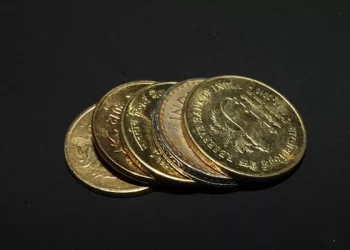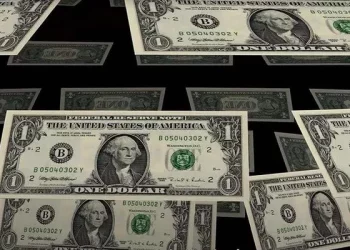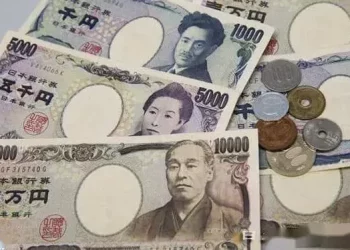In today’s global financial landscape, currencies play a central role in facilitating trade, investment, and travel. The value of one currency in terms of another can fluctuate due to a range of factors, such as economic conditions, market sentiment, and geopolitical events. For individuals, businesses, and investors, understanding exchange rates and their impact on financial decisions is critical.
In this article, we will explore the question: “How much is 100,000 rupees in dollars?” To answer this question, we must delve into the exchange rate system, the relationship between the Indian Rupee (INR) and the US Dollar (USD), and various factors that influence the value of these currencies. Additionally, we will explore how to calculate the exchange rate, potential fluctuations, and the broader implications for individuals and businesses involved in cross-border transactions.
The Indian Rupee and US Dollar: A Brief Overview
Before we dive into the specifics of the exchange rate between the Indian Rupee (INR) and the US Dollar (USD), it’s important to understand what these currencies represent and their role in the global economy.
The Indian Rupee (INR)
The Indian Rupee (INR) is the official currency of India, one of the world’s most populous and fastest-growing economies. The Reserve Bank of India (RBI) is responsible for issuing and managing the Indian Rupee, and its value is determined by various factors, including inflation, interest rates, trade balances, and economic growth.
Historically, the value of the Indian Rupee has fluctuated against major currencies, with the USD being one of the most prominent. India’s economic performance, trade deficits, and geopolitical factors often play a significant role in determining the value of the Rupee on the global stage.
The US Dollar (USD)
The US Dollar (USD) is the official currency of the United States, and it serves as the world’s primary reserve currency. It is widely used in international trade, investment, and as a benchmark for various financial instruments. The value of the US Dollar is influenced by factors such as the US economy’s performance, interest rates set by the Federal Reserve, inflation, and global economic trends.
The US Dollar is often considered a “safe-haven” currency, meaning that during times of economic uncertainty or geopolitical instability, investors tend to buy US Dollars as a protective measure. This demand for the USD can cause it to appreciate against other currencies, including the Indian Rupee.
Understanding Exchange Rates
The exchange rate is the value of one currency in terms of another. It determines how much one currency can be exchanged for in the foreign exchange market (Forex). Exchange rates are typically quoted in pairs, such as USD/INR or EUR/USD, which represent the value of one unit of the first currency in terms of the second currency.
For example, if the exchange rate for USD/INR is 75, it means that 1 US Dollar is equivalent to 75 Indian Rupees. Conversely, if the exchange rate for INR/USD is 0.013, it means that 1 Indian Rupee is equivalent to 0.013 US Dollars.
Exchange rates are influenced by a variety of factors, including:
Interest Rates: Higher interest rates tend to attract foreign capital, increasing demand for the local currency, which can appreciate its value.
Economic Growth: Strong economic performance typically strengthens a country’s currency as it reflects investor confidence in the economy.
Inflation: Higher inflation often leads to a depreciation of a currency, as it erodes the purchasing power of that currency.
Trade Balances: Countries with trade surpluses (exporting more than they import) tend to have stronger currencies, while those with trade deficits may see their currencies weaken.
Geopolitical Events: Political instability, conflicts, or changes in government policies can lead to fluctuations in currency values.
How to Calculate 100,000 Rupees in Dollars
Now that we understand the basic principles of exchange rates, let’s explore how to convert 100,000 Indian Rupees (INR) into US Dollars (USD). The process is relatively simple, but it requires knowing the current exchange rate between the two currencies.
Step 1: Find the Current Exchange Rate
The exchange rate between the Indian Rupee and the US Dollar fluctuates constantly based on market conditions. To find the current exchange rate, you can check reliable financial news sources, currency converters, or forex trading platforms.
As an example, let’s assume that the current exchange rate is:
1 USD = 75 INR
This means that 1 US Dollar is equivalent to 75 Indian Rupees.
Step 2: Convert the Rupees to Dollars
To convert 100,000 INR into USD, you simply divide the amount in Rupees by the exchange rate:
100,000INR÷75INR/USD=1,333.33USD
Therefore, 100,000 Indian Rupees is equivalent to approximately 1,333.33 US Dollars at an exchange rate of 1 USD = 75 INR.
Step 3: Consider Transaction Costs
When converting currencies, it’s important to keep in mind that exchange rates offered by banks, currency exchanges, or money transfer services may include transaction costs or fees. These fees can reduce the amount of USD you receive in exchange for your 100,000 INR.
For example, if a currency exchange service charges a 1% fee, the amount you would receive after the conversion would be slightly less than the 1,333.33 USD calculated earlier. In this case:
1,333.33USD−(1,333.33USD×0.01)=1,320USD
So, after accounting for the transaction fee, you would receive 1,320 US Dollars for your 100,000 Indian Rupees.
Exchange Rate Fluctuations: What Affects the INR to USD Value?
Exchange rates between the Indian Rupee and the US Dollar do not remain static; they can fluctuate due to a range of economic and market factors. Let’s take a closer look at some of the key drivers behind these fluctuations:
1. Interest Rate Differentials
The difference in interest rates between India and the United States can have a significant impact on the value of the INR against the USD. If the Reserve Bank of India (RBI) raises interest rates, it could increase demand for the Indian Rupee, as higher interest rates typically attract foreign investment. Conversely, if the US Federal Reserve raises interest rates, it could strengthen the US Dollar relative to the Indian Rupee.
2. Trade Deficits and Surpluses
India’s trade balance plays a crucial role in determining the strength of the Indian Rupee. If India is running a trade deficit (importing more than it exports), there is greater demand for foreign currencies (such as the US Dollar) to pay for imports. This can weaken the Indian Rupee relative to the Dollar. On the other hand, a trade surplus, where exports exceed imports, can strengthen the Rupee as foreign buyers exchange their currencies for Indian Rupees.
3. Inflation and Economic Growth
Inflation rates in India and the US can influence the relative strength of their currencies. A country with high inflation typically sees its currency depreciate over time because inflation reduces the purchasing power of the currency. Conversely, strong economic growth can attract investment and bolster a currency’s value.
4. Geopolitical Stability and Global Sentiment
Geopolitical events, such as political instability, natural disasters, or changes in government policy, can cause significant volatility in exchange rates. For example, if investors perceive that the Indian economy is facing challenges or that India is politically unstable, they may reduce their exposure to the Indian Rupee, leading to depreciation. In contrast, the US Dollar often benefits from being a “safe-haven” currency during periods of global uncertainty.
5. Speculation and Market Sentiment
Forex markets are highly influenced by speculation and investor sentiment. Traders who speculate on the future direction of currency pairs, including the INR/USD pair, can cause short-term fluctuations in the exchange rate. For instance, if traders believe that the Indian economy will perform well, they may buy Indian Rupees, pushing up the exchange rate.
Converting Currency in Practice: The Forex Market
The foreign exchange (Forex) market is the largest and most liquid financial market in the world. It operates 24 hours a day, five days a week, and is the place where currencies are bought and sold.
To exchange INR for USD in the Forex market, you would typically use one of the following methods:
Banks and Financial Institutions: Most banks offer foreign exchange services, allowing you to convert INR into USD for a fee. The exchange rates provided by banks are usually competitive, but they may charge transaction fees.
Currency Exchange Bureaus: These are often located at airports, train stations, and popular tourist areas. They offer currency exchange services but usually at less favorable rates than banks.
Online Currency Converters: There are many online platforms that allow you to check live exchange rates and convert currencies at competitive rates.
Forex Brokers and Trading Platforms: For those who wish to engage in currency trading, forex brokers offer platforms to buy and sell currencies. These platforms often provide access to real-time data and the ability to trade based on market movements.
Conclusion
To summarize, the value of 100,000 Indian Rupees (INR) in US Dollars (USD) depends on the current exchange rate between the two currencies. As of a recent example, if the exchange rate is 1 USD = 75 INR, then 100,000 INR would be equivalent to 1,333.33 USD. However, exchange rates fluctuate constantly due to a range of economic and geopolitical factors, and transaction fees may also affect the final amount you receive.
Understanding the factors that influence exchange rates and staying informed about market conditions can help individuals, businesses, and investors make better decisions when converting currencies. Whether you are planning a trip to the United States, making an international investment, or managing a business that deals with cross-border transactions, understanding how to convert INR to USD and how exchange rates work is essential for managing your finances effectively.
Related Topics:

























